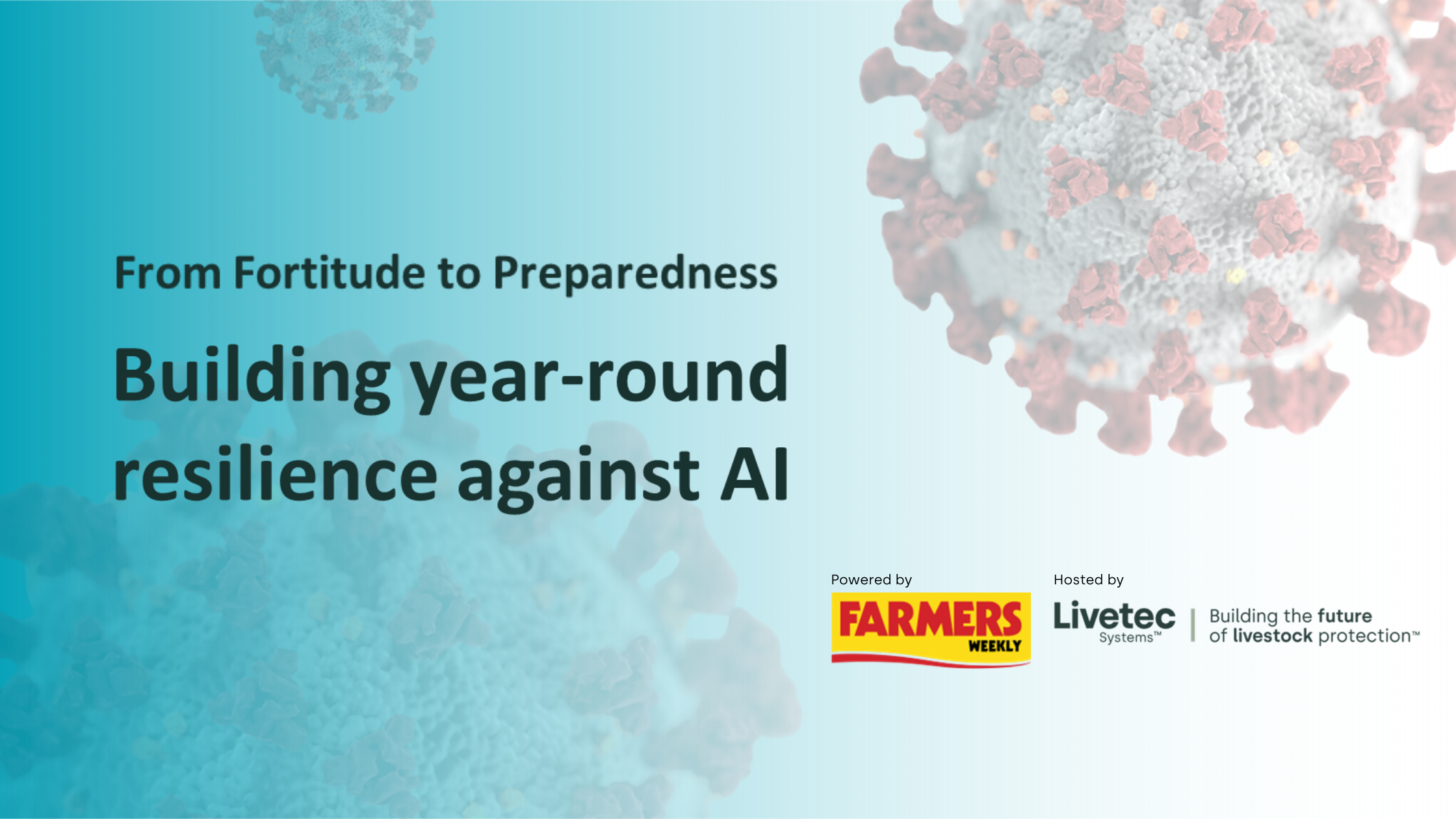
From Fortitude to Preparedness: Building Year-Round Resilience Against AI
Avian Influenza (AI) is no longer a seasonal challenge. Outbreaks and disease pressures now persist throughout the year, reshaping how producers, vets, and the wider industry approach biosecurity. Last week's webinar, From Fortitude to Preparedness – Building Year-Round Resilience Against AI, powered by Farmers Weekly, explored how the sector can move beyond “biosecurity fatigue” toward practical, structural, and data-driven preparedness.
Setting the Scene
Jack Hughes, Biosecurity Advisor at Livetec Systems, opened the session with reflections on lessons from the past six months. He reminded the audience that biosecurity should not be seen as a temporary measure during high-risk periods but as an embedded, daily routine. He emphasised the importance of strong leadership, training, and structural investment in turning short-term compliance into long-term resilience.
Biosecurity in Poultry Practice: Discussion with Sally Hutton
Jack then led a detailed discussion with Sally Hutton, Director at Crowshall Veterinary Services, to examine common on-farm realities. Drawing on her 11 years of veterinary experience, Sally highlighted recurring weaknesses:
- Weak demarcation and barriers: unclear separation of biosecure areas, insufficient PPE provision, and poorly managed traffic flow.
- Boot-changing protocols: frequent mistakes in step-over barrier use, undermining their effectiveness as physical controls.
Together, Jack and Sally explored how these issues often stem from a mindset challenge. They stressed that every action, from properly disinfecting tractor wheels to maintaining barriers, plays a part in reducing disease risk, and that small lapses can have major consequences.
The discussion also touched on:
- Vaccination and biosecurity balance: Vaccines are valuable but not sufficient on their own. They require healthy birds and cannot cover every disease threat.
- Economic framing: Demonstrating the return on investment from structural improvements could help producers see biosecurity not as a cost, but as a safeguard for productivity and profitability.
New Feature: Wild Bird Tracking in Livestock Protect
The session also introduced a new feature within the Livestock Protect platform: wild bird tracking, presented by Julian Sparrey (Group Technical Director, Livetec) and Kaluba Chikonde (Data Lead, Livetec).
This development enhances the platform’s early warning capabilities by combining:
- Wild bird mortality reports (Defra/APHA) updated in real time.
- Live migratory tracking data for high-risk species, such as gulls, which account for around 30% of recent AI cases in wild birds, according to APHA Wild bird data.
- Interactive mapping showing historical and current outbreak patterns.
Kaluba explained that wild bird mortality frequently peaks before outbreaks in poultry, particularly during summer months. By overlaying this with live migratory data, Livestock Protect provides producers with a clearer picture of viral pressure in their local areas.
Julian highlighted how this insight enables producers to strengthen their defenses proactively for example, by tightening deterrents such as netting and vent spikes, reinforcing staff protocols, and addressing vulnerabilities in site infrastructure.
The addition of wild bird tracking shifts Livestock Protect from reporting where outbreaks have occurred to supporting predictions about where they are most likely to emerge next.
Julian also noted that the feature is still an early step in using live migratory data for predictive insight. The tracking information comes from open ecological studies, offering a useful snapshot of bird movements rather than a full national picture. Its strength lies in helping producers interpret changing patterns and act early. As Julian put it, “We have to be cautious, it’s just a snapshot of these birds, but the more data we gather, the better our understanding will become.”
Closing Thought
The discussion highlighted that building resilience against AI is not about reacting to outbreaks but about embedding preparedness into everyday practice. With stronger biosecurity cultures, closer collaboration, and tools such as wild bird tracking, the industry can move towards a more proactive and confident future.
Start strengthening your resilience today. Explore how Livestock Protect can give you real-time insights into viral pressure in your area, support smarter decision-making, and help safeguard your flocks year-round.
We would also like to thank Sally Hutton, Director at Crowshall, for sharing her expertise during the webinar, her insights into on-farm realities and practical biosecurity solutions were invaluable to the discussion.


.png?width=1000&height=625&name=Day%20in%20the%20life%20(2).png)